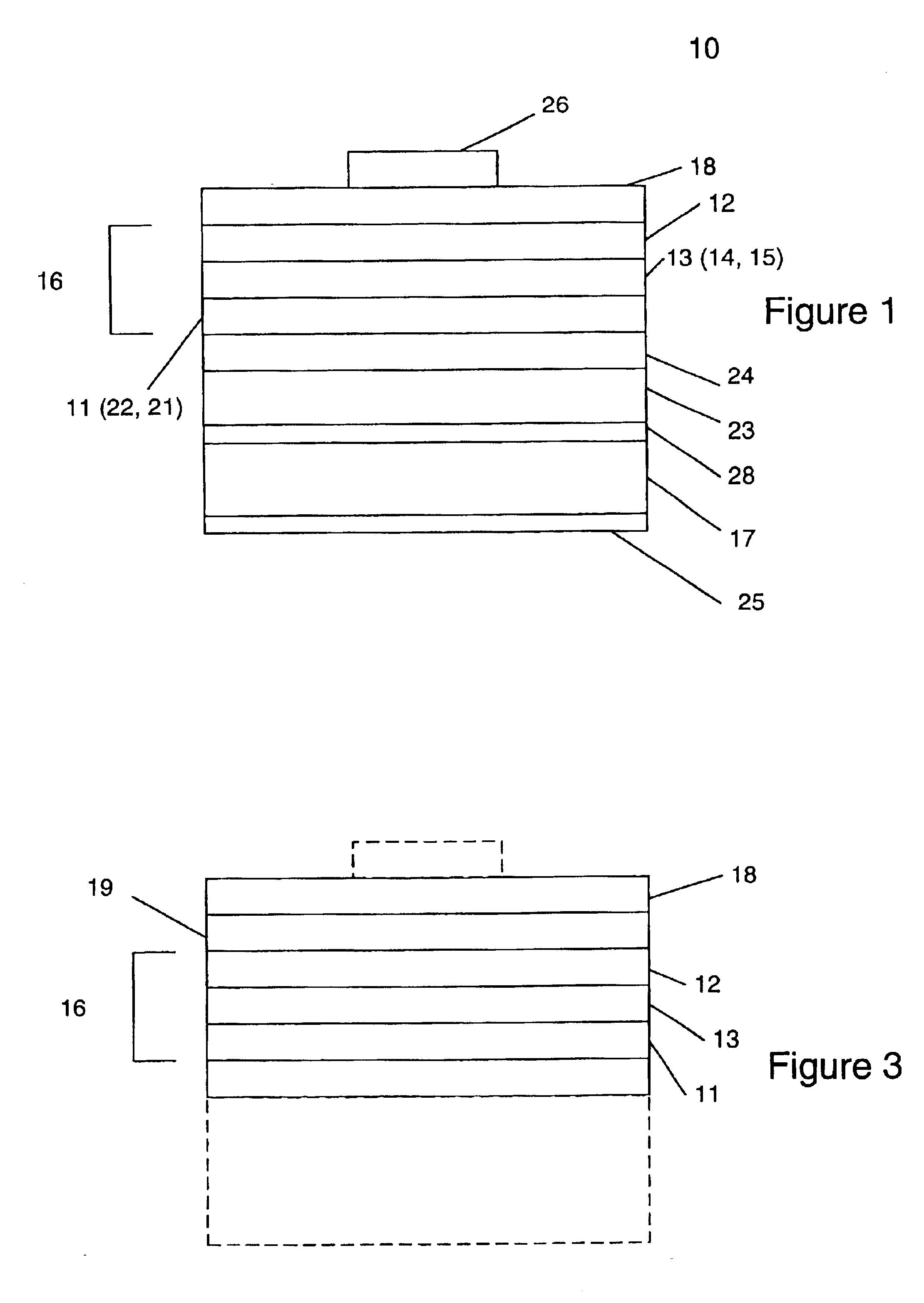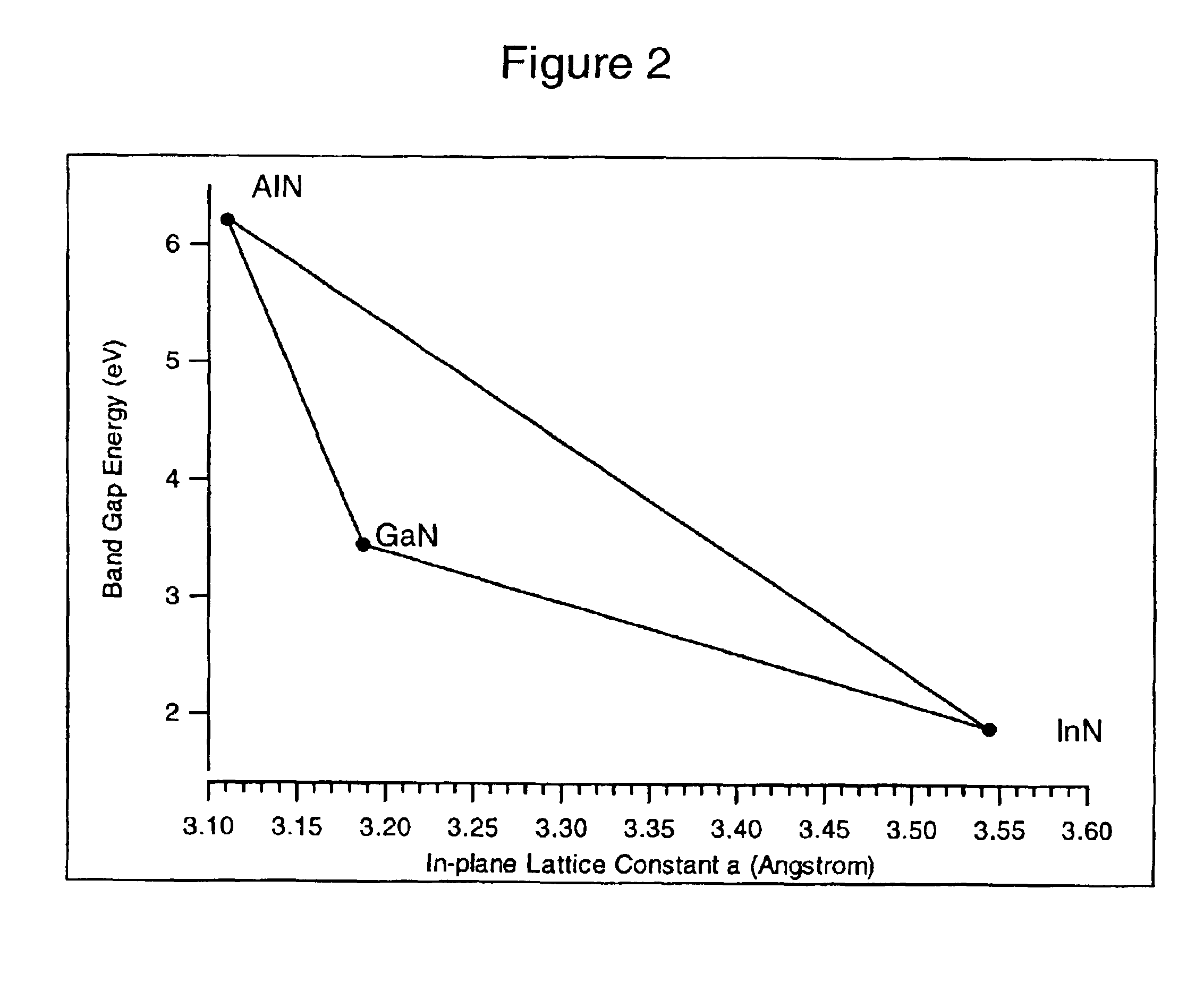Group III nitride LED with undoped cladding layer and multiple quantum well
a nitride led, undoped technology, applied in the direction of semiconductor lasers, lasers, solid-state devices, etc., can solve the problems of less likely transition, less functional constraints, and less likely blue light production
- Summary
- Abstract
- Description
- Claims
- Application Information
AI Technical Summary
Benefits of technology
Problems solved by technology
Method used
Image
Examples
Embodiment Construction
[0043]The present invention is a semiconductor structure for light emitting devices that can emit in the red to ultraviolet portion of the electromagnetic spectrum. In a first embodiment, the structure includes a Group III nitride active portion positioned between a first n-type Group III nitride cladding layer and a second n-type Group III nitride cladding layer. The active portion preferably includes an active layer and a quantum well or a multiple quantum well as described further later herein. The second n-type cladding layer is characterized by the substantial absence of magnesium (i.e., magnesium may be present, but only in amounts that are so small as to have no functional effect on the semiconductor device). The semiconductor structure itself is further characterized by a p-type Group III nitride layer, which is positioned in the semiconductor structure such that the second n-type cladding layer is between the p-type layer and the active layer. In addition, the active layer ...
PUM
 Login to View More
Login to View More Abstract
Description
Claims
Application Information
 Login to View More
Login to View More - R&D
- Intellectual Property
- Life Sciences
- Materials
- Tech Scout
- Unparalleled Data Quality
- Higher Quality Content
- 60% Fewer Hallucinations
Browse by: Latest US Patents, China's latest patents, Technical Efficacy Thesaurus, Application Domain, Technology Topic, Popular Technical Reports.
© 2025 PatSnap. All rights reserved.Legal|Privacy policy|Modern Slavery Act Transparency Statement|Sitemap|About US| Contact US: help@patsnap.com



